Linux Mint team announced the latest release of Linux Mint 17.1 code-named "Rebecca", it is updated version based on Ubuntu 14.04.1 LTS and Linux Mint 17.1 now features Cinnamon 2.4/Mate 1.8, MDM 1.8, a Linux kernel 3.13 and an Ubuntu 14.04 package base. "The team is proud to announce the release of Linux Mint 17.1 'Rebecca' MATE. Linux Mint 17.1 is a long term support release which will be supported until 2019. It comes with updated software and brings refinements and many new features to make your desktop even more comfortable to use. Linux Mint 17.1 MATE edition comes with two window managers installed and configured by default: Marco (MATE's very own window manager, simple, fast and very stable); Compiz (an advanced compositing window manager which can do wonders if your hardware supports it). Among the various window managers available for Linux, Compiz is certainly the most impressive when it comes to desktop effects." You can dive into complete details of release announcement here for Cinnamon and Mate.
Cinnamon and Mate screenshots
11/1/14 - 12/1/14
Install Xtreme Download Manager in Ubuntu 14.04 Trusty/Ubuntu 12.04 Precise/Linux Mint 17.1/1713/and other Ubuntu derivatives
Xtreme Download Manager is a advanced and powerful tool to increase download speed up-to 500%, resume broken/dead downloads, integrate with any browser, capture videos from YouTube, Metacafe, DailyMotion, Google Video or any other website and schedule downloads. Xtreme Download Manager uses sophisticated dynamic segmentation algorithm,data compression and connection reuse to speed up the download process. Xtreme Download Manager supports HTTP, HTTPS and FTP protocols, firewalls, proxy servers, automatic proxy scripts, file redirects, cookies, authorization etc.
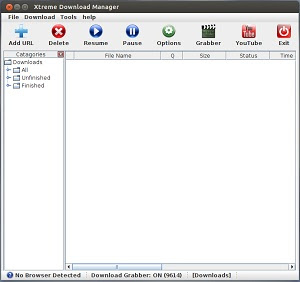

Xtreme Download Manager is a advanced and powerful tool to increase download speed up-to 500%, resume broken/dead downloads, integrate with any browser, capture videos from YouTube, Metacafe, DailyMotion, Google Video or any other website and schedule downloads. Xtreme Download Manager uses sophisticated dynamic segmentation algorithm,data compression and connection reuse to speed up the download process. Xtreme Download Manager supports HTTP, HTTPS and FTP protocols, firewalls, proxy servers, automatic proxy scripts, file redirects, cookies, authorization etc.


Install GnomishGray theme on Ubuntu 14.10 Utopic/14.04 Trusty/12.04 Precise/Linux Mint 17.1/17/13 and other Ubuntu based distributions (GTK + Gnome Shell)
GnomishGray is a silver gray GTK3+Gnome-Shell theme, based on Adwaita, for those who prefer light GTK themes with neutral colors. A GTK2 theme, based on the Murrine and Pixmap engines (provided by gtk2-engines-murrine and gtk2-engines-pixbuf in the Debian-based systems) is also included. This version is compatible with Gnome 3.10/3.12 and latest GTK but PPA contains all versions for previous Gnome + Gtk versions. You can use Unity Tweak Tool, Gnome-tweak-tool or Ubuntu-Tweak to change themes. Fs-icons used in screenshots.


GnomishGray is a silver gray GTK3+Gnome-Shell theme, based on Adwaita, for those who prefer light GTK themes with neutral colors. A GTK2 theme, based on the Murrine and Pixmap engines (provided by gtk2-engines-murrine and gtk2-engines-pixbuf in the Debian-based systems) is also included. This version is compatible with Gnome 3.10/3.12 and latest GTK but PPA contains all versions for previous Gnome + Gtk versions. You can use Unity Tweak Tool, Gnome-tweak-tool or Ubuntu-Tweak to change themes. Fs-icons used in screenshots.


Install GnomishDark theme in Ubuntu 14.10 Utopic/14.04 Trusty/Ubuntu 12.04 Precise/Linux Mint 17.1/17/13 (GTK)
GnomishDark is dark clean GTK3 theme, this theme is based on adwaita engine, and Gnome-Shell version is also included with this theme but only available for Ubuntu 12.04. GnomishDark also offers GTK2 themes, which depends on murrine and pixbuf engines. Developer stopped development of Gnome Shell theme because Gnome Shell development is frequent and always breaks his theme so no more gnome updates. If you found any bug in theme then report it to developer via given source link.
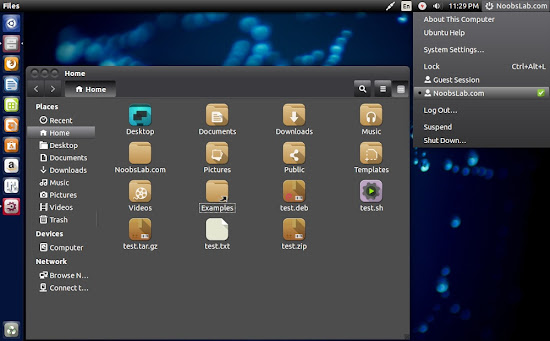

GnomishDark is dark clean GTK3 theme, this theme is based on adwaita engine, and Gnome-Shell version is also included with this theme but only available for Ubuntu 12.04. GnomishDark also offers GTK2 themes, which depends on murrine and pixbuf engines. Developer stopped development of Gnome Shell theme because Gnome Shell development is frequent and always breaks his theme so no more gnome updates. If you found any bug in theme then report it to developer via given source link.


Install GnomishBeige theme in Ubuntu 14.10 Utopic/14.04 Trusty/Ubuntu 12.04 Precise/Linux Mint 17.1/17/13 (GTK 3 + Gnome Shell)
GnomishBeige theme is designed for GTK 3, Gnome Shell and it is based on adwaita engine, it is available for Gnome Shell 3.4/3.5.4 version, creator said it is waste of time to make Gnome Shell theme because every new release of Gnome Shell breaks the theme and they have to fix it. GnomishBeige gives brownish flavor to desktop, Developer also created GnomishDark and GnomishGray themes. GnomishDark also offers GTK2 themes, which depends on murrine and pixmap engines. This update brings compatibility with latest GTK. If you found any bug in theme than report it to developer via source link.
zonColor icons used in screenshots. Also checkout icons collection.
You can use Unity Tweak Tool, Gnome-tweak-tool or Ubuntu-Tweak to change themes/icons.
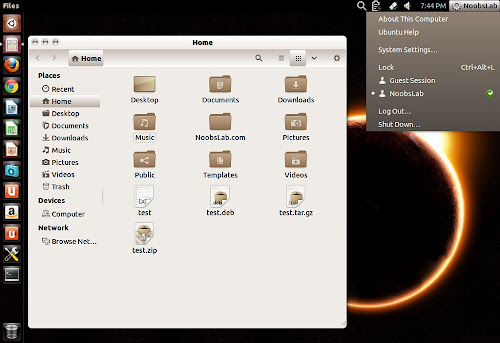

GnomishBeige theme is designed for GTK 3, Gnome Shell and it is based on adwaita engine, it is available for Gnome Shell 3.4/3.5.4 version, creator said it is waste of time to make Gnome Shell theme because every new release of Gnome Shell breaks the theme and they have to fix it. GnomishBeige gives brownish flavor to desktop, Developer also created GnomishDark and GnomishGray themes. GnomishDark also offers GTK2 themes, which depends on murrine and pixmap engines. This update brings compatibility with latest GTK. If you found any bug in theme than report it to developer via source link.
zonColor icons used in screenshots. Also checkout icons collection.
You can use Unity Tweak Tool, Gnome-tweak-tool or Ubuntu-Tweak to change themes/icons.


Ubuntu 15.04, which is codenamed the Vivid Vervet, is currently penciled in to release on 23rd April, 2015. The release date for Ubuntu 15.04 has now been firmed up as are the other development milestones leading up to the mid-April debut of this release. Ubuntu 15.04 a big focus on convergence and Unity 8 with Mir, early systemd integration, and many other changes planned for development over the next six months.
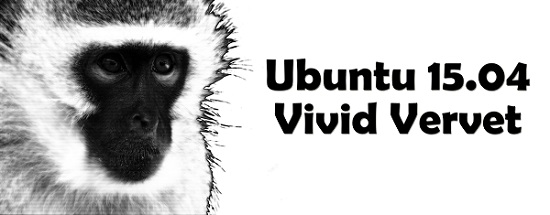
The schedule of the release of Ubuntu 15.04 Vivid Vervet with given dates are as follows:
Download Daily build of Ubuntu 15.04 Vivid Vervet



The schedule of the release of Ubuntu 15.04 Vivid Vervet with given dates are as follows:
- December 18th - Alpha 1 (Not Public Release - opt-in)
- January 22nd - Alpha 2 (Not Public Release - opt-in)
- February 28th - Beta 1 (Not Public Release - opt-in)
- March 26th - Final Beta
- April 16th - Release Candidate
- April 23rd - Final Release
Download Daily build of Ubuntu 15.04 Vivid Vervet


Mac OS (MBuntu) Transformation pack is ready for Ubuntu 14.10 Utopic/14.04 Trusty Tahr/Linux Mint 17.1 Rebecca/17 Qiana
(Note: For best results use Unity/Gnome FallBack, and for previous Ubuntu versions link to posts are given)
>> MacBuntu Pack For Ubuntu 17.04 Zesty Zapus
>> MacBuntu Pack For Ubuntu 16.04 Xenial Xerus
>> MacBuntu Pack For Ubuntu 15.10 Wily Werewolf
>> MacBuntu Pack For Ubuntu 15.04 Vivit Vervet
>> MacBuntu Pack For Ubuntu 14.04 Trusty Tahr/Linux Mint 17
>> MacBuntu Pack For Ubuntu 12.04 Precise Pangolin/Linux Mint 13


(Note: For best results use Unity/Gnome FallBack, and for previous Ubuntu versions link to posts are given)
Finally after a lot of work Mac OS X (Macbuntu Yosemite) transformation pack is ready for Ubuntu 14.10 Utopic Unicorn/14.04 Trusty Tahr. We could make everything automated but in this way you guys won't get how things done in Linux, so we kept everything semi-automatic and interactive. This pack contains themes for GTK (supports: Unity, Gnome, Cinnamon, Mate, and Xfce), two themes for Gnome Shell, one theme for Cinnamon, one icon theme, cursors, and boot screen. I collected some parts for themes from different sources (Cinnamon, Gnome Shell theme from Yosemite Shell, some parts from Zukimac) and Jared from ravefinity helped us fixing bugs in themes, and some icons also collected from different sources[1], docky themes are Ambiance and Buyi-idock. Following these instructions you can completely change look of your Ubuntu 14.10/14.04 to look like Mac. In previous pack we used LightDM webkit theme which was quite similar to Mac login screen, this time we are offering again but you have to use it on your own risk because many users reported problems last time.
Mac packs for Linux are almost stopped but we kept this project on our list from 12.04, and now we have reached to 14.10 with Mac transformation. Many people look on the internet for pre-configured Macbuntu 14.10/Mac4lin, Mac Ubuntu theme and so on, but it is good idea to transform it by yourself because if you want to go back to default look or want to change look you can do that easily.
Note: If you encounter any bug in theme/icons/any stuff, report to us with screenshot or problem with details.
>> MacBuntu Pack For Ubuntu 17.04 Zesty Zapus
>> MacBuntu Pack For Ubuntu 16.04 Xenial Xerus
>> MacBuntu Pack For Ubuntu 15.10 Wily Werewolf
>> MacBuntu Pack For Ubuntu 15.04 Vivit Vervet
>> MacBuntu Pack For Ubuntu 14.04 Trusty Tahr/Linux Mint 17
>> MacBuntu Pack For Ubuntu 12.04 Precise Pangolin/Linux Mint 13



For numerical computation, data analysis, usually Matlab software is used but it is not necessarily best software available. The main thing is that Matlab is commercial and expensive. Students of Machine learning always wondering what other alternative available for them that is powerful and can be free of cost, which means students don't have to spend their money on a proprietary software. I received a request from people who were looking for Matlab alternatives, so I decided to share with all of you, here are some best available alternatives to Matlab for Linux/Ubuntu/Linux Mint. These software are available in Ubuntu universe repository, also you can build from source if needed.


Vibrancy Colors is a bold, modern & beautiful "Vibrant" GTK Icon Theme. Vibrancy is a highly polished mixture of many amazing open source icon projects/themes into a new, "beautiful" icon theme. It is meant to be modern, clean and customizable. Vibrancy is a different take on the "Flat" or "Modern Design" trend, Featuring simple, beautiful and modern icons. But with more handcrafted details and emotion. Fully tested/built to work on most major GTK desktops including: Unity, Cinnamon, Gnome Shell, Gnome Classic, Mate, Xfce, LXDE, Openbox and more.
To install Vibrancy-Colors in any Debian/Ubuntu/Linux Mint open Terminal (Press Ctrl+Alt+T) and copy the following commands in the terminal:
That's it

To install Vibrancy-Colors in any Debian/Ubuntu/Linux Mint open Terminal (Press Ctrl+Alt+T) and copy the following commands in the terminal:
Terminal Commands: |
|---|
wget -O vibrancy-colors.deb https://launchpad.net/~ravefinity-project/+archive/ubuntu/ppa/+files/vibrancy-colors_1.7%7Etrusty%7ENoobslab.com_all.deb |
sudo dpkg -i vibrancy-colors.deb |
rm vibrancy-colors.deb |

The days of the big mechanical cash register are long gone; even platen scanners are no longer considered a necessity for retail services, with big box retail chains like OfficeMax stores eschewing the glass and laser counter for a simple hand scanner.  Many retailers already use Ubuntu or Linux operation systems for their point of sale (POS) systems due to the locked down security they offer, but for the most part this has been limited to large chain retailers with money to spend on a dozen POS stations at a time.
Many retailers already use Ubuntu or Linux operation systems for their point of sale (POS) systems due to the locked down security they offer, but for the most part this has been limited to large chain retailers with money to spend on a dozen POS stations at a time.
However, with the release of Ubuntu Touch 14.04, the winds of change may just be blowing in. As stated by developers—and reiterated in Ars Technica's review—the 14.04 is a "mostly stable" build of the Linux based mobile OS. It's not perfect, but the fact that it offers unrivaled security with the mobility and touch functionality of a tablet means this could be a contender for POS systems in small businesses everywhere.
 Many retailers already use Ubuntu or Linux operation systems for their point of sale (POS) systems due to the locked down security they offer, but for the most part this has been limited to large chain retailers with money to spend on a dozen POS stations at a time.
Many retailers already use Ubuntu or Linux operation systems for their point of sale (POS) systems due to the locked down security they offer, but for the most part this has been limited to large chain retailers with money to spend on a dozen POS stations at a time.However, with the release of Ubuntu Touch 14.04, the winds of change may just be blowing in. As stated by developers—and reiterated in Ars Technica's review—the 14.04 is a "mostly stable" build of the Linux based mobile OS. It's not perfect, but the fact that it offers unrivaled security with the mobility and touch functionality of a tablet means this could be a contender for POS systems in small businesses everywhere.
Easy Checkout
According to the specs offered on the official site, Ubuntu Touch works on displays as small as 6.5 inches and as large as 20 inches, meaning that while buying a brand new tablet for just this purpose sounds like a great idea, most small business owners can probably get away with putting it on that Nexus 7 half the entrepreneurs of the world picked up last year to help manage their business better.
There are a plethora of apps, both free and paid, that can turn an Ubuntu tablet into a POS station, but with a five star rating on SourceForge and an update within the last 90 days, POSper is definitely the winner. This is a simple, easy to use touch-based POS app designed for use on a Linux OS—the touch-based functionality makes it seem that this one was designed specifically for Ubuntu Touch, but that's not even the best feature. POSper was designed specifically for small businesses, supporting an impressive range of hardware and databases to allow everyone who uses it to get the most out of every feature.
There are a plethora of apps, both free and paid, that can turn an Ubuntu tablet into a POS station, but with a five star rating on SourceForge and an update within the last 90 days, POSper is definitely the winner. This is a simple, easy to use touch-based POS app designed for use on a Linux OS—the touch-based functionality makes it seem that this one was designed specifically for Ubuntu Touch, but that's not even the best feature. POSper was designed specifically for small businesses, supporting an impressive range of hardware and databases to allow everyone who uses it to get the most out of every feature.
In spite of being free, POSper offers a number of features commonly only found in paid POS applications:
- Ability to use multiple currencies (with programmable exchange rates)
- Custom payment methods including "free" and "invoice"
- Warning message when no payment type is selected (often even big retail POS systems simply do nothing in the case of this error, so this is an excellent feature for new users)
- System warnings in plain English for new users
- Printer templates with scale and margin features
With these simple must-have features available on a secure, stable and free system, what is it that's keeping Ubuntu Touch from becoming the clear choice for small businesses everywhere? As usual, it's a problem with plastic. At the moment the biggest hurdle to jump toward making a complete POS system for small businesses that works with a Linux operating system is actually the credit card reader. While there are plenty of readers that are compatible with Ubuntu and Linux, considering it's fairly popular with big retailers, they're a little pricey when it comes to individual sales.
However, retailers can rest assured that, as more small businesses get familiar with what a Linux OS can offer them in terms of security and ease of use, there's little doubt that Square and PayPal Here will offer compatibility before long.
However, retailers can rest assured that, as more small businesses get familiar with what a Linux OS can offer them in terms of security and ease of use, there's little doubt that Square and PayPal Here will offer compatibility before long.
A Full Retail Solution?
When it comes to small business retail, there are a lot of moving parts. While the POS terminal itself is extremely important to the daily operation of mom and pop shops everywhere, that's not the end of it. On top of needing a POS system and all related hardware, small businesses also need to make sure the checkout process is easy and inventory can easily be tracked.
Thankfully, those requirements have a single solution, and it's one that Linux can provide with ease: UPCs and other barcodes. Chances are you've already heard about the ZINT Barcode Generator, which offers easy creation of over 150 different barcode symbologies from UPCs to QR codes; this is one program that every small business that works with a barcode scanner could use, and it's designed especially for Linux.
ZINT Barcode Generator can also create USPS codes, making business easier for online retailers as well by offering simple shipping solutions. No more wasting hours in the post office every time a big order comes in! All you need is a Linux compatible barcode printer, like the ones offered by small business support company Shopify, and you're ready to get started.
Thankfully, those requirements have a single solution, and it's one that Linux can provide with ease: UPCs and other barcodes. Chances are you've already heard about the ZINT Barcode Generator, which offers easy creation of over 150 different barcode symbologies from UPCs to QR codes; this is one program that every small business that works with a barcode scanner could use, and it's designed especially for Linux.
ZINT Barcode Generator can also create USPS codes, making business easier for online retailers as well by offering simple shipping solutions. No more wasting hours in the post office every time a big order comes in! All you need is a Linux compatible barcode printer, like the ones offered by small business support company Shopify, and you're ready to get started.
Trust In the Future
Whether Ubuntu Touch ever catches on in small business POS systems remains to be seen. Considering the unrivaled security and ease of use, as the operating system becomes more streamlined in updates past the 14.04 you can expect to see it used more often in retail business everywhere. It may just change how small retailers do business, both from a cost perspective and when it comes to the go-to equipment.





Royal-Gtk is a modern flat theme with a combination of light and dark elements based on Numix. The original Numix theme modified to make more user experience better because it was too dark according to Sultan Al Isaiee. He did it for himself but then he shared his work with public.
Now this theme contains less dark colors, dark toolbar for Gtk3 apps, dark theme for GIMP and Qt Creator, new window controls (similar to OSX 10.10) and border-less Unity app windows. He modified this only for Ubuntu Unity but as I tested it can work under Linux Mint too. You can use Unity Tweak Tool, Gnome-tweak-tool or Ubuntu-Tweak to change themes.


This 14.0 release brings many updates and changes, not the least of which is the change to the software’s name and logo. The release candidate cycle will also be the first to include the official logo of Kodi! Kodi is a new name for project XBMC, Kodi feels very natural to use from the couch and is the ideal solution for your home theater.


Sovietec-OS icons are created by Juan. It contains more than 9500+ icons for the most of applications/folders/status/mime-types/others which are available for Linux, it is released under GNU General Public License. If you like the creator work then don't forget to cheer them up by donations. This icon theme is compatible with Unity, Gnome, Xfce, KDE, Mate, and Cinnamon. It is first release of this icon theme and in active development, if you found any missing icon for an application/mime-type/folder/devices/or any other icon then report to creator via this link. You can use Unity Tweak Tool, Gnome-tweak-tool or Ubuntu-Tweak to change icons.
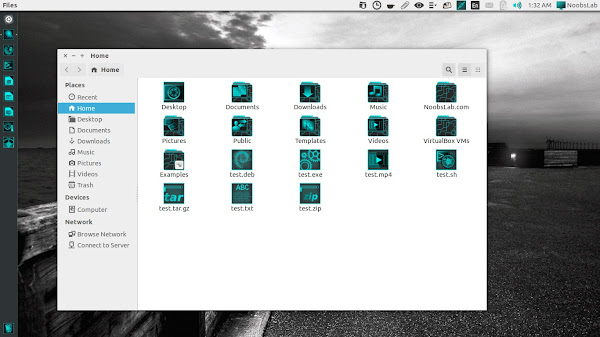



Mint team released new version 2.4 of Cinnamon with new features and bugs fixes, new redesigned stuff, enhancements to the bottom panel, also include cinnamon setting manager. In version 2.4, and similar to MATE or Xfce, Cinnamon is an entire desktop environment built on GNOME technologies. It still uses toolkits and libraries such as GTK or Clutter and it is still compatible with all GNOME applications, but it no longer requires GNOME itself to be installed. It now communicates directly with its own backend services, libraries and daemons: cinnamon-desktop, cinnamon-session and cinnamon-settings-daemon. This new version will be featured in Linux Mint 17.1 “Rebecca” planned for the end of November and in LMDE 2 “Betsy” planned for Spring 2015.




Subscribe to:
Comments (Atom)


